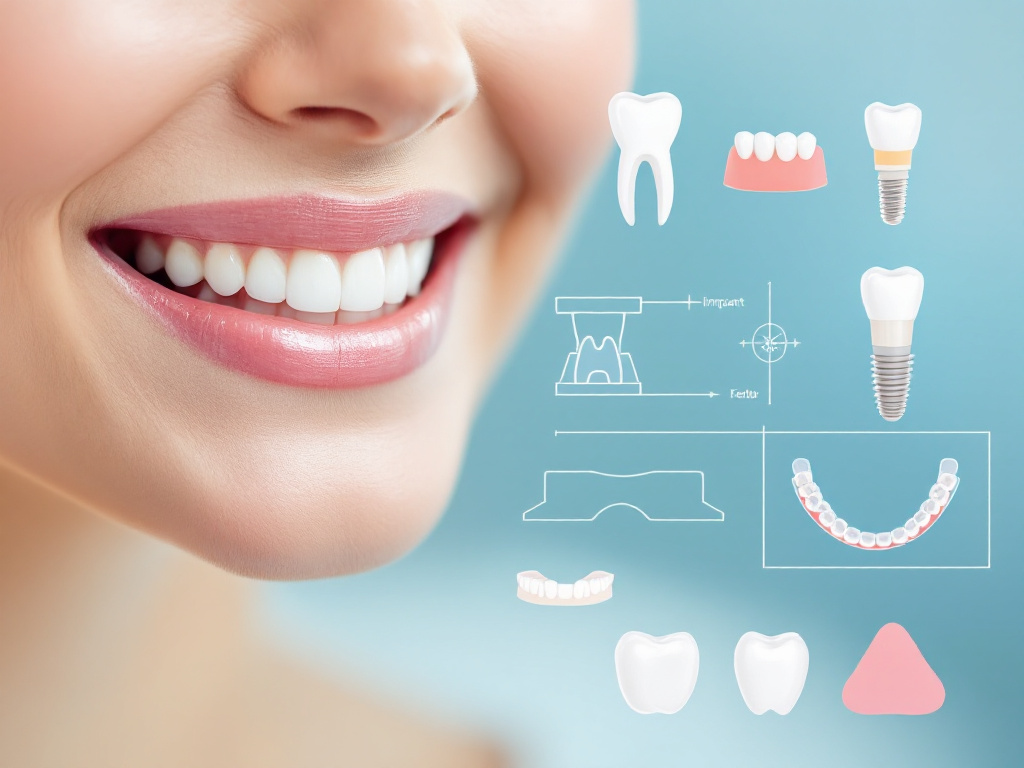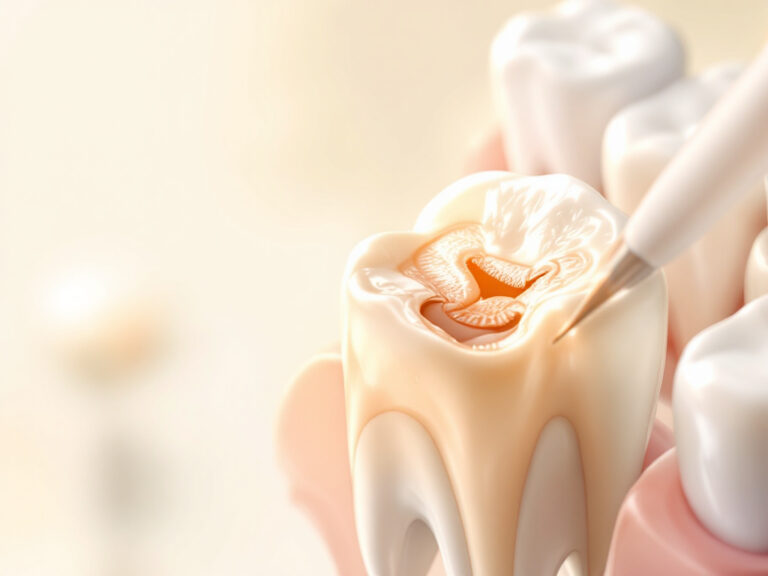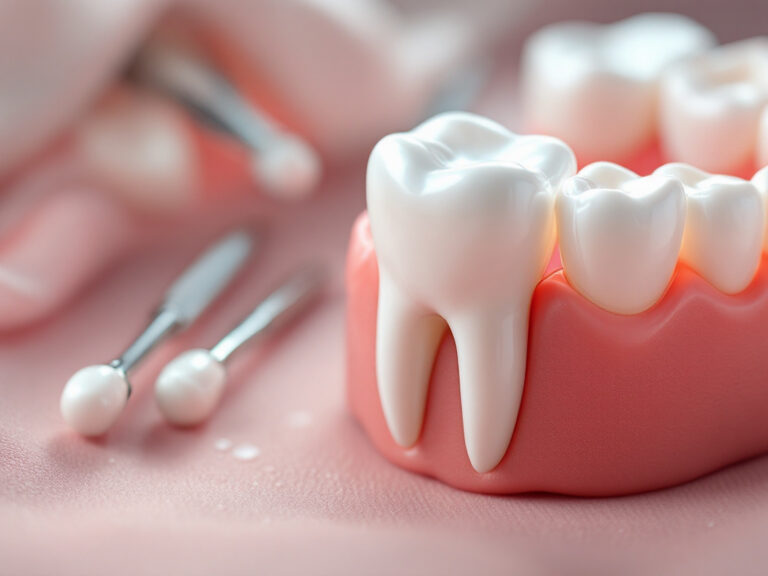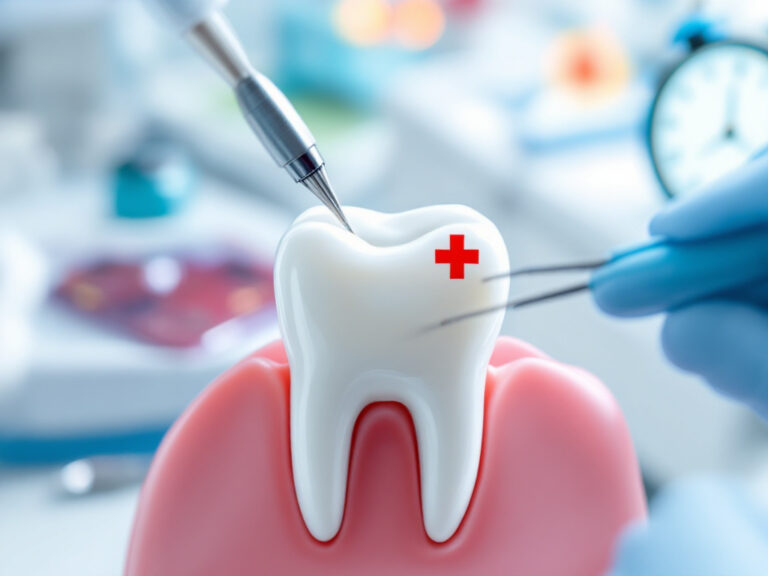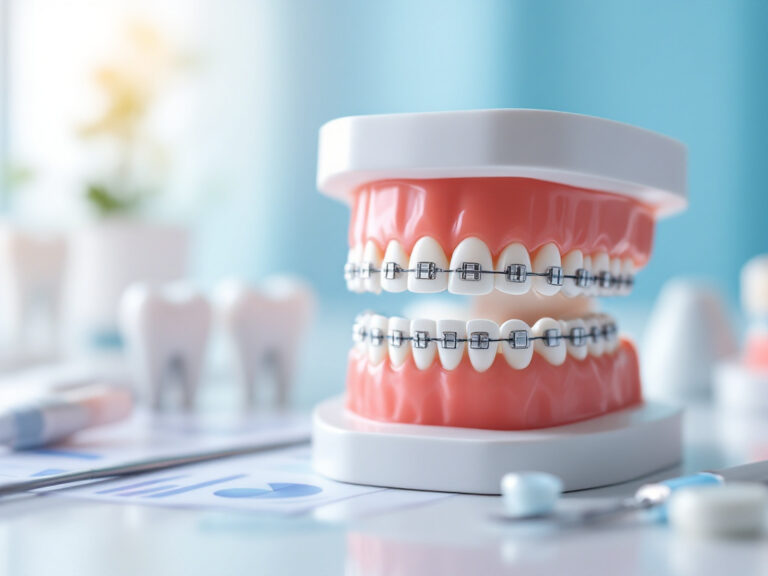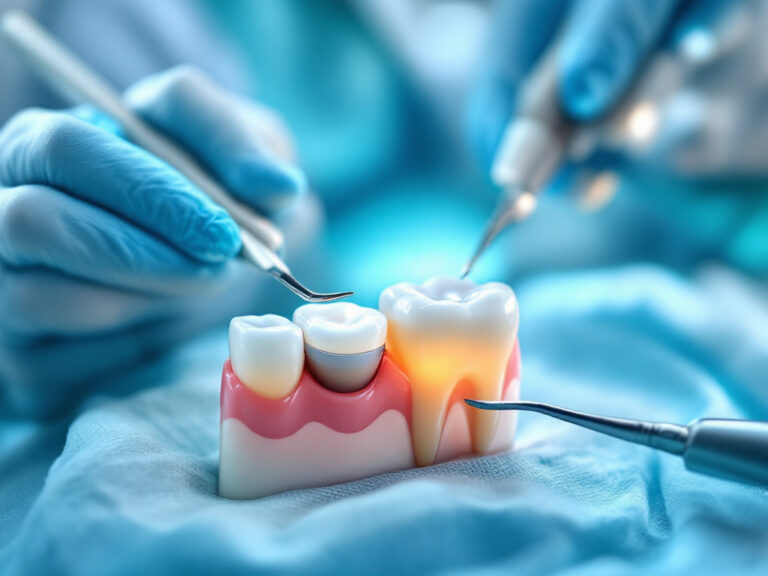When you lose one or more teeth, exploring tooth replacement solutions can help you restore your smile, bite strength, and oral health. In modern restorative dentistry, you have a range of proven options—dental implants, fixed bridges, and removable dentures—all engineered to mimic natural teeth in function and appearance. This guide walks you through the most reliable methods so you can choose the best path to long-term comfort and confidence.
Understand replacement categories
You’ll find several primary tooth replacement solutions, each suited to different needs and budgets.
Dental implants
• Titanium posts surgically placed into your jawbone serve as artificial roots, fusing through osseointegration for a stable base [1].
• Implants look and feel like natural teeth, can last decades, and help prevent bone loss [2].
• Ideal for single-tooth replacement or full arches using All-on-4 methods.
Fixed dental bridges
• Fabricated crowns span a gap by anchoring to adjacent teeth after preparation [1].
• Bridges provide a natural appearance without surgery, with a three-year survival rate of about 94% and over 89% at five years [3].
• Explore our dental bridge replacement options for more details.
Removable partial dentures
• Replacement teeth on a gum-colored base attach via clasps to neighboring teeth, removable for cleaning [1].
• Typically last 3–5 years and may need relining as bone changes [4].
• Learn about partial denture replacement.
Complete dentures
• Custom-fit plates replace an entire arch, aesthetic and functional but require daily removal and care [5].
• Costs average around $1,968 for upper and lower plates [6].
• Ask about custom denture fitting.
Resin-retained bridges
• Also called Maryland bridges, these use metal or ceramic wings bonded to adjacent teeth for front-tooth gaps, less invasive and more affordable [5].
Implant-supported overdentures
• Overdentures lock onto implants for increased stability, bite force, and comfort [7].
Assess your candidacy
Not every option suits every patient. Your overall health, jawbone quality, and daily habits shape the ideal solution.
Health factors
• Chronic conditions like diabetes or leukemia may slow healing after implant surgery [1].
• Non-smokers typically experience better outcomes, especially with implants.
Bone density and support
• Sufficient jawbone volume is critical for implant success; grafting can augment bone if needed [8].
• Bridges and resin-retained options bypass bone requirements but depend on adjacent tooth health.
Oral hygiene commitment
• Implants demand diligent brushing, flossing, and regular check-ups to maintain osseointegration.
• Dentures require daily removal, soaking, and cleaning.
Budget considerations
• Implants cost between $1,600 and $2,200 per tooth on average, while a full denture arch runs about $1,600 [8].
• Bridges and resin-retained options often have lower initial costs but shorter lifespans.
Consult your provider through a dental implant consultation to confirm the right path.
Compare procedural steps
Each solution follows a distinct timeline and process. Understanding these steps helps you plan appointments and recovery.
Implant placement timeline
- Consultation and imaging to assess bone
- Surgical placement of titanium posts (may be same-day for mini implants) [8]
- Healing period of 1–6 months for osseointegration
- Attachment of abutment and crown
Fixed bridge workflow
- Preparation of adjacent teeth by reducing enamel
- Impressions or digital scans
- Temporary bridge placement
- Final cementation of custom bridge (typically 2–3 visits) [1]
Denture fitting process
- Impressions and bite registration
- Try-in of wax setups for fit and aesthetics
- Final denture delivery and adjustment [5]
Same-day crown workflow
• In-office CAD/CAM devices scan your prepared tooth and mill a ceramic crown while you wait, eliminating temporary restorations.
• Learn more about dental crown placement and porcelain crown restoration.
• In emergencies, ask about emergency dental crown replacement.
Review cost factors
Balancing budget and longevity guides your choice.
Typical costs
• Single implant: $1,450–$3,875, average $2,695 [6].
• Complete dentures: $1,520–$3,648, average $1,968 for upper and lower.
• Mini implants: $676–$1,616, average $860.
• All-on-4 full arch: $11,640–$27,500, average $15,176.
Short-term vs long-term value
• Bridges cost less initially than implants but average lifespan is about 10.1 years, owing to stress on abutment teeth [4].
• Implant success exceeds 95% over 40–50 years, making implants the most documented long-term solution [4].
• Partial dentures need relining every few years [4].
Budget support
• Check eligibility for insurance covered dental restoration.
• Ask about in-office financing or medical credit lines.
• Explore affordable restorative dentistry plans.
Explore high-tech options
Advances in dental technology improve speed, comfort, and precision.
CAD/CAM same-day crowns
• Digital impressions and on-site milling cut treatment to one appointment for many crown cases.
Guided implant surgery
• 3D-printed surgical guides based on CBCT scans increase placement accuracy and reduce recovery time.
Digital smile design
• Software previews post-treatment aesthetics so you can approve shade, shape, and alignment.
Zirconia and ceramic materials
• New high-strength ceramics deliver lifelike translucency and durability.
Plan for long-term care
Maintaining your restorations ensures comfort and extends service life.
Daily routines
- Brush twice daily with nonabrasive toothpaste.
- Floss around implants, bridges, or under denture clasps.
- Soak removable appliances overnight.
Professional visits
- Schedule check-ups and cleanings every 6 months, or as recommended.
- Have night guards fitted if you grind your teeth to protect bridges [3].
Lifestyle habits
- Avoid hard or sticky foods on restored teeth.
- Quit smoking to improve healing and reduce complication risks.
Optimize aesthetic results
Achieving a natural smile relies on color, shape, and gum health.
Shade matching
• Lab-grade digital shade imaging ensures crowns and bridges blend seamlessly.
Custom shading techniques
• Layered porcelain mimics enamel translucency for lifelike restorations.
Tissue compatibility
• Zirconia and biocompatible alloys minimize gum irritation.
Front-tooth solutions
• Consider a resin-retained bridge for minimally invasive replacement of anterior teeth [5].
• Explore porcelain inlay and onlay treatment to preserve more enamel than full crowns.
Pursue full-mouth rehabilitation
When multiple teeth or bite issues exist, a comprehensive plan restores function and balance.
Comprehensive treatment planning
• Digital wax-ups and diagnostic models guide sequencing of implants, crowns, bridges, and dentures.
Integrate bite correction
• Address misalignment through bite correction dental treatment to protect new restorations.
Phased delivery
• Phase 1: preserve remaining teeth with cavity repair and restoration or tooth filling repair.
• Phase 2: perform root canal therapy services or gentle root canal treatment on compromised teeth.
• Phase 3: place implants or bridges, deliver dentures.
Learn more about our full mouth restoration program.
Secure financing assistance
Affordable care options let you move forward without compromise.
Insurance benefits
• Verify coverage for implants, crowns, and dentures through insurance covered dental restoration.
In-office financing
• Many practices offer 0% interest plans over 6–12 months.
Third-party credit
• Health-focused credit lines can fund higher-cost treatments.
Discount plans
• Ask about membership programs that reduce lab fees and standardize pricing.
Choose the right specialist
Your provider’s expertise has a direct impact on your results.
Implant proficiency
• The success of a dental implant largely depends on the dentist’s skill and training [9].
• Seek a clinician who performs guided surgery and places a high volume of implants.
Crown and bridge expertise
• Board-certified prosthodontists or experienced general dentists ensure precise dental crown placement and porcelain crown restoration.
• In emergencies, look for practices offering emergency dental crown replacement.
Restorative comfort
• If you crack a tooth, prompt attention from a cracked tooth repair service prevents further damage.
Endodontic care
• For internal damage, gentle approaches through gentle root canal treatment preserve more of your natural tooth.
Preserve natural tooth structure
Whenever possible, conservative treatments delay or avoid full replacements.
Composite fillings
• Modern bonding materials repair cavities with minimal removal of healthy enamel [10].
Cavity repair
• Early intervention through cavity repair and restoration prevents decay from reaching the pulp.
Tooth filling repair
• Damaged restorations can often be repaired rather than replaced [11].
Inlays and onlays
• Custom ceramic or gold inlays strengthen larger cavities while conserving tooth structure [12].
Endodontic therapy
• Preserving a natural tooth via root canal therapy services or gentle root canal treatment avoids extraction.
Cracked tooth repair
• Early diagnosis and stabilization by a cracked tooth repair service can save the tooth.
Structural preservation
• Minimally invasive techniques support overall tooth structure preservation and delay the need for extensive prosthetics.
By understanding your options, evaluating your candidacy, and partnering with an experienced team, you’ll find the most reliable tooth replacement solutions to renew your smile, restore oral function, and safeguard your long-term health.
References
- (Specialized Dentistry)
- (Healthline; Dentiq Dental; Periodontal Associates)
- (Parkwood Dental)
- (Temecula Facial Oral Surgery)
- (Abbadent)
- (CareCredit)
- (Healthline; Dentiq Dental)
- (Healthline)
- (Periodontal Associates)
- (composite dental fillings)
- (tooth filling repair)
- (porcelain inlay and onlay treatment)

